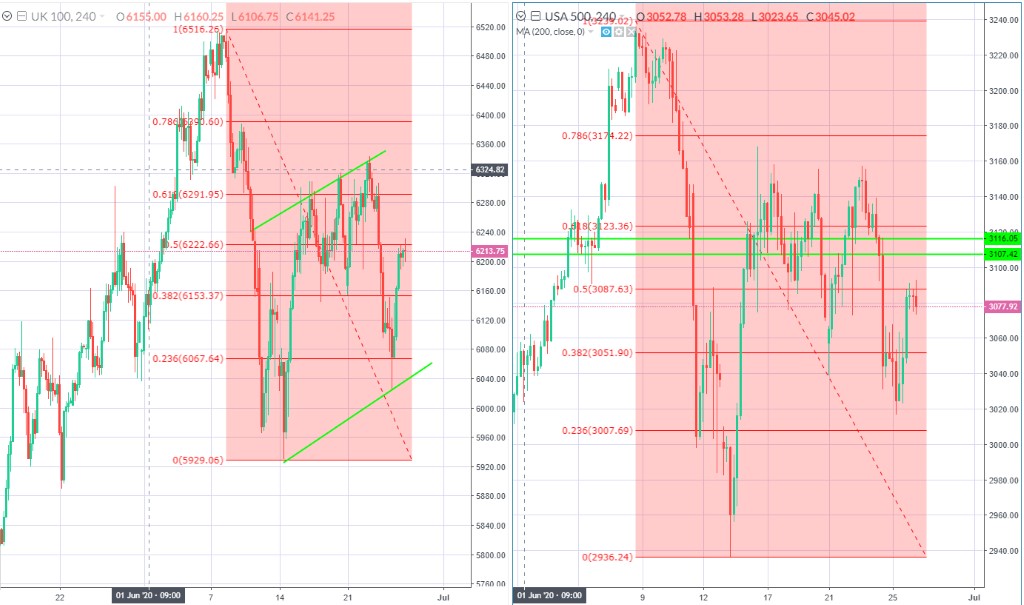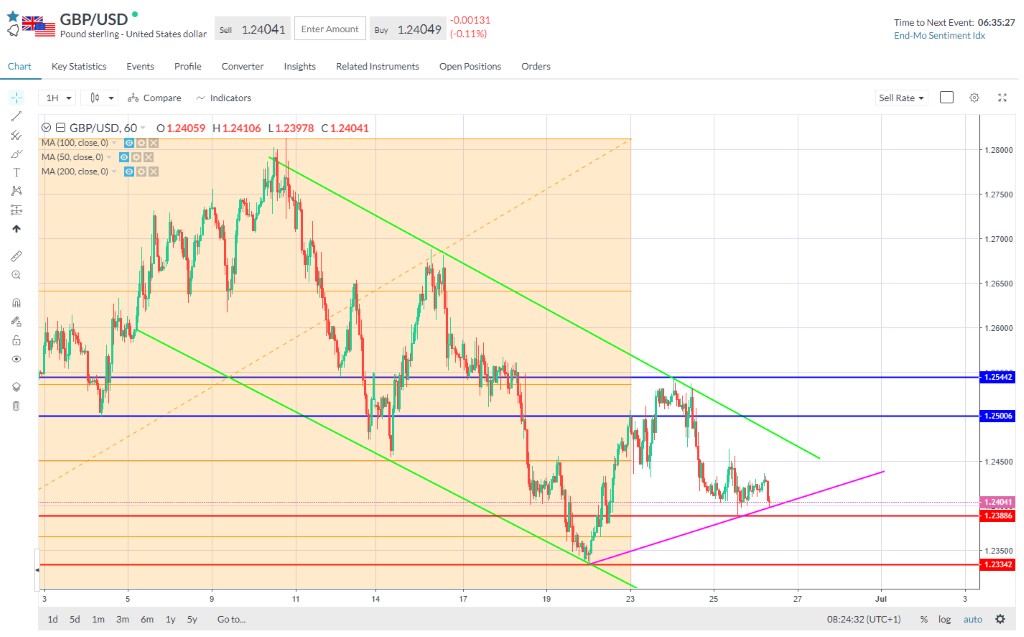
Friday Jun 26 2020 07:45

6 min
Tesco shares slipped on the open despite surging sales online and in-store. Due to the economic situation and expected rise in unemployment, the company has increased provisions for bad debts at Tesco Bank, which will result in a loss of £175m-£200m for the 2020/21 financial year. In April management had flagged a likely loss at the bank this year versus £193m in operating profit last year. This will weigh on group profits for the year and while grocery sales are much better, profits may struggle to follow the kind of yoy progress.
At the core business, sales are of course exceptionally strong online (+48%) and roaring ahead in-store too. Total sales in the core UK & ROI business increased by 9.2%. Booker was up 6%, with the –32% decline in catering offset by a +24% increase in retail. The decision to match Aldi on prices means lower margins for core consumer division, whilst online operations are costly to maintain, particularly as the business has responded to such a surge in demand. But in big retail you have to keep running. Shares are down 11% YTD.
Talking of banks and bad loans, the Federal Reserve’s much-anticipated stress tests on US banks were published. The central bank warned that under certain scenarios some banks’ reserves would fall close to minimum capital thresholds, with lenders suffering up to $700bn in loan losses in the worst case. The Fed instructed the 33 largest banks to suspend share buybacks and cap dividend payments until the fourth quarter of this year, at the soonest.
However, all will need to resubmit plans later in the year. Shares in Goldman Sachs, JPMorgan Chase and Wells Fargo all fell in extended trade after hours, all three having rallied by around 3-4% in the normal session ahead of the results. So, all the banks have, in essence, ‘passed’, but we know that is only because of the massive injection of Fed liquidity provisions and monetary easing, as well as Congressional stimulus.
Earlier, financials (+2.26%) had led the way higher as the S&P 500 climbed more than 1% and the Dow added 300 points after Federal Deposit Insurance Commission officials in the US said they would ease the Volcker Rule, a post-financial crisis era regulation designed to rein in banks’ risk-taking. Some argue this kind of regulation, which has completely curtailed prop trading, has been a drag on bank profits as much as low interest rates.
The move would free up a lot of bank capital and make it easier for lenders to make large investments into venture capital. It would also end the need for banks to set aside capital for derivatives trades between different affiliates of the same firm. This idea has been floated in the past of course – but seems to have found new support since the crisis.
Stimulus is good, but it’s not sustainable; better to unleash animal spirits and let people get on with the business of taking risk and making money. We ought to be mindful of any implications of a Democrat White House and Congress on this change.
Energy stocks also rose (+1.96%) as oil prices rebounded off the lows. Crude oil (Aug) touched lows close to $37 as risk assets were offered earlier on during Thursday but recovered as stocks turned green later in the session. WTI has recovered to $39 but slipped a little this morning; bulls require the recovery to $40 first and then a push above $41.50 to reassert the uptrend. Natural gas prices plummeted to a 25-year low, amid a rise in stockpiles and declining demand.
The rally on Wall Street lifted the boats around the world. European stocks had begun shaky but turned positive for the day and have opened higher again on Friday morning. The rally in global equities continued into the Asian session overnight and has sent the major indices back towards the middle of the June range. Stocks rallied despite the growing signs that several large and economically important US states are going through significant rises in cases of Covid-19 and some are halting their reopening.
The market does seem to be able to live with rising cases better than it did, partly because there is not the sense that anyone wants to lockdown the entire economy again. Longer-term we are looking at the data over the summer providing a much clearer view of how economies are doing, and we need to see what the next corporate earnings season tells us. If investors start to think EPS forecasts are not about to improve drastically then the S&P 500 cannot handle the kind of multiple it currently trades on.

In FX, the majors are holding ranges. GBPUSD continues to slide down the channel but bulls will be hoping to put in a new higher low close to 1.2390, yesterday’s bottom. We’re getting to the point where this channel either reverses course of makes fresh lows towards 1.22. At the open the pair slipped to test the near-term support (pink line), which may guide the path to the top of the channel. Failure here suggests a retest of yesterday’s lows.

